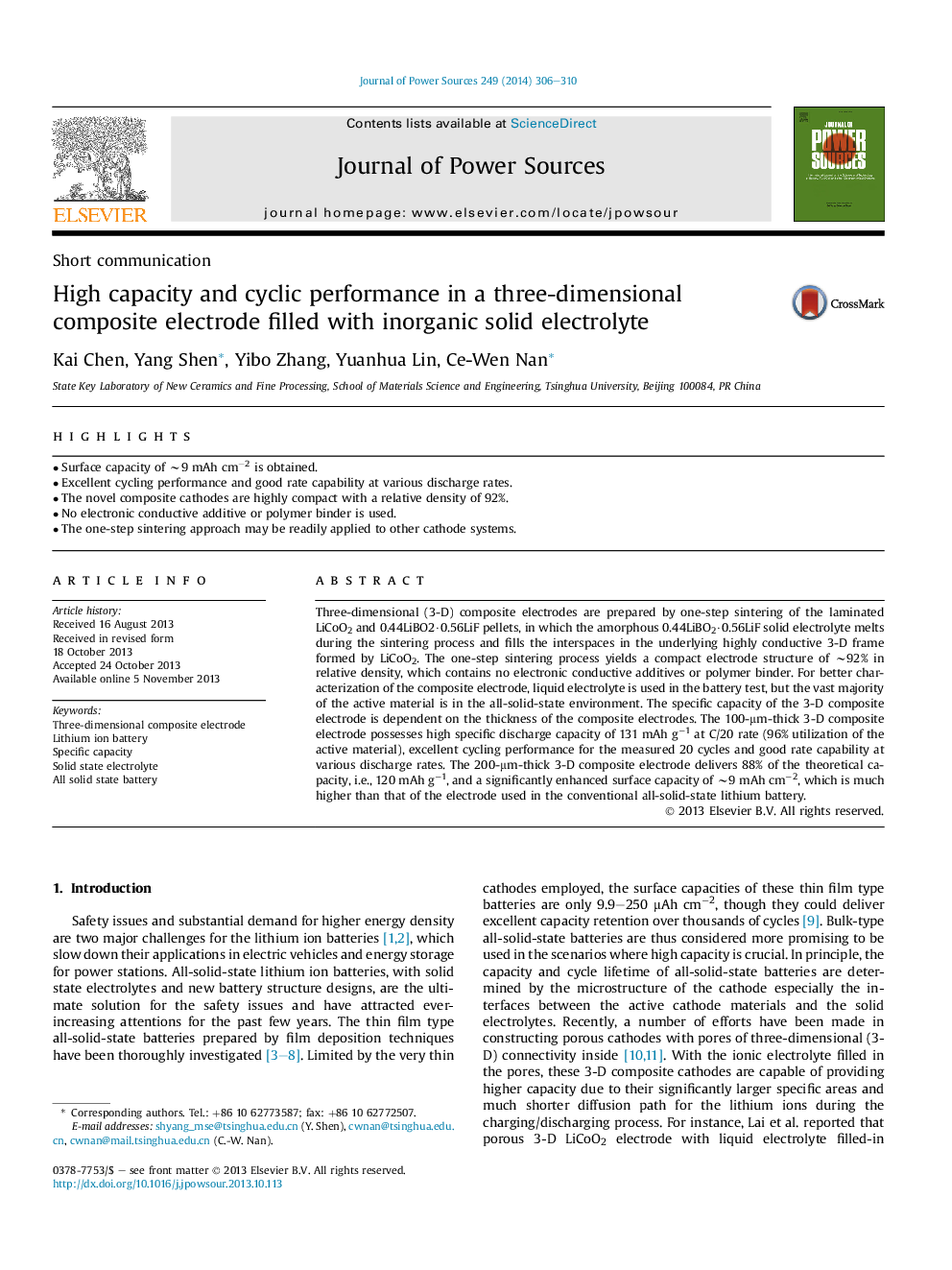| Article ID | Journal | Published Year | Pages | File Type |
|---|---|---|---|---|
| 7738208 | Journal of Power Sources | 2014 | 5 Pages |
Abstract
Three-dimensional (3-D) composite electrodes are prepared by one-step sintering of the laminated LiCoO2 and 0.44LiBO2·0.56LiF pellets, in which the amorphous 0.44LiBO2·0.56LiF solid electrolyte melts during the sintering process and fills the interspaces in the underlying highly conductive 3-D frame formed by LiCoO2. The one-step sintering process yields a compact electrode structure of â¼92% in relative density, which contains no electronic conductive additives or polymer binder. For better characterization of the composite electrode, liquid electrolyte is used in the battery test, but the vast majority of the active material is in the all-solid-state environment. The specific capacity of the 3-D composite electrode is dependent on the thickness of the composite electrodes. The 100-μm-thick 3-D composite electrode possesses high specific discharge capacity of 131 mAh gâ1 at C/20 rate (96% utilization of the active material), excellent cycling performance for the measured 20 cycles and good rate capability at various discharge rates. The 200-μm-thick 3-D composite electrode delivers 88% of the theoretical capacity, i.e., 120 mAh gâ1, and a significantly enhanced surface capacity of â¼9 mAh cmâ2, which is much higher than that of the electrode used in the conventional all-solid-state lithium battery.
Related Topics
Physical Sciences and Engineering
Chemistry
Electrochemistry
Authors
Kai Chen, Yang Shen, Yibo Zhang, Yuanhua Lin, Ce-Wen Nan,
